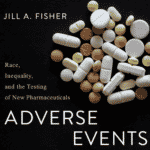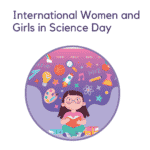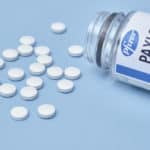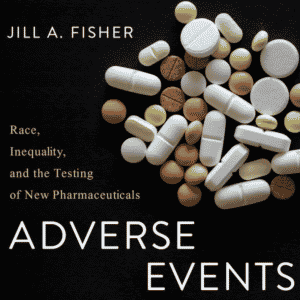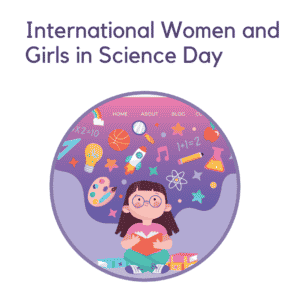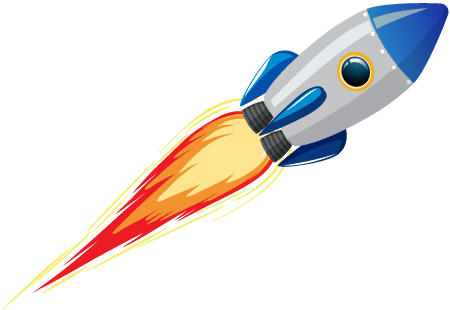A historical perspective on the drug development process
Although the advance of many technologies and automation, the drug development on current days has a methodology and relatively success and most important: a scientific basis. But this was not always true In the beginning, health was synonymous with magicians and religious art before evolving into a scientific method.
At the beginning of the pharmaceutical era, humanity had less knowledge of science. A cure was highly associated with religion, far away from the rationality of science. Thereby, the drugs were mostly a combination of plant infusions.
The process of bringing a drug into the market is called drug development and the research that goes with it is called Drug Research. The discovery of small-molecule drugs is complex and difficult because the traditional development process considers the efficacy of a molecule, then assesses its druggability, which often leads to high failure rates and development costs.
- FINANCIAL ASPECT OF DRUG DISCOVERY: Despite the recent surge in the scientific and technological aspects of drug discovery, it remains a field that requires a huge amount of capital. In the initial stages, most of the capital Is obtained via government grants and philanthropic organisations. The world’s largest economy, the United States of America, funds about 37.3 billion dollars annually in this field.
- THE PROCESS OF DRUG DISCOVERY: This process’ main target is to find the lead compound, one that will go for further preclinical and clinical testing before it is finally being approved for global use. The diagram below illustrates the process of drug discovery.
The methodology to develop a new drug Overview: the 4 steps in drug development
The ability to rationally design drugs using a target-based approach started in the mid-80s. Although there is still quite a bit of fine-tuning necessary to perfect the process, understanding the phases of drug development can greatly improve the chances of getting a drug approved by the regulating agency. Several processes are required before the final sale of a drug can begin on the market. The following are the four main phases that drug development undergoes:
- Drug Discovery
- Preclinical Development
- Clinical trials
- Approved Drug
Figure 1 shows how the whole process occurs, from the drug concept to the market.
Phase 1: Drug Discovery and Development
First step in the process is called the Drug Discovery Process and we can subdivide this into 2 main research processes.
Before the actual procedure of drug design, scientists determine the target, which consists of a single gene, a gene product or a molecular mechanism (an enzyme, for example). On a target-based drug discovery, the organism is seen as a series of genes and pathways and the goal is to develop drugs that affect only one gene or molecular mechanism.
One is the identification of a target. A target is a receptor for the pharmaceutical drug that can be in the form of proteins, glycoproteins, proteolipids or enzymes. The process of target selection is mainly based on one or more of these receptor families (Steroids, Ion channel, Transmembrane tyrosine kinase, JAK-STAT and G-protein-coupled). To determine the right target, it must fulfil the following requirements:
- Targets must not be evenly distributed throughout the body.
- Target must have a role in the pathophysiology of the disease.
- Target must have good toxicity profile
- Target should be assayable
The second is to identify a compound that is able to interfere with the selected target. As this process is iterative, compound optimisation to fine-tune its affinity and selectivity is usually needed. The efforts at this moment are high screening capacity and the ability to formulate simple, clear requirements to the drug, which allows the implementation of “rational drug design”. Drug design frequently but not necessarily relies on computer modelling techniques and bioinformatics approaches in the big data era. Drug design can be put into three (3) categories, these are:
- Computer-aided drug design
- Ligand-based drug design
- Structure-based drug design.
I will go more in-depth on this topic in a specific post about Drug Design.
In this phase, the priority is to find promising candidates to develop drugs. The big question is: “how does this drug work in the body?”. This phase is pretty much about how the pharmacokinetics of this new drug, and the tests are made by microdosing. This step serves to identify drug candidates to decide which has the best pharmacokinetic parameters in humans and accelerate the process. They enable decisions to be based on humans, instead of depending on animal data and then obtaining more precise results.
It needs to be highlighted that medicinal chemistry is a cyclic approach of “design, synthesise, test, evaluate” and it act as a spark for the structural design to find more potent molecules
Phase 2: Pre-Clinical trials
In the second Phase, drug developers must test in humans by dose-ranging, mostly in healthy volunteers. The experiments are conducted to identify some aspects: how the drugs interact with other drugs or treatment, how it is absorbed and excreted, potential benefits, side effects, the ideal dosage, the best way to give the drug (mouth; or injection) , how it affects different groups of people and its effectiveness as compared to similar drugs. To identify the best dosage, some tests are made by an escalated method, analysing safety, side effects and their variables like fasting.
2. Preclinical Research: This involves the process of studying a drug or procedure in animals before it can be subjected to humans in clinical research. Basically, during this procedure, two sets of animals are prepared. One set will act as the control, whilst the other set will be subjected to the lead compounds. If the results obtained with the test animals show more promise to cure or provide a vaccine, this shows a preliminary benefit of the lead compound. The main goal of this procedure Is to determine the safe dose or the therapeutic dose. The therapeutic index (TI) identifies the margin of safety of the drug. It is a ratio between the therapeutic dose in 50% of persons/animals and the lethal dose in 50% of animals. The therapeutic dose is written as ED50, and the lethal dose in animals is written as LD50. The closer the ratio is to 1, the greater the chances of toxicity and this requires that blood levels be monitored in the plasma. Some of the animals which are used during this preclinical trial include mice, monkeys and guinea pigs. The reason why these animals are used is due to their similarity to the human being on a cellular level.
Phase 3: Clinical Trials
Phase three starts once the therapeutic dose is determined in phase 2. Here, the tests are done on actual patients that the drug was designed will be initiated. The intention is to set the side effects and their efficacy in treating the disease. Phase 2 studies are sometimes divided into Phase 2A and Phase 2B. Phase 2A studies are usually the first studies designed to demonstrate clinical efficacy Phase 2B studies look to find the optimum dose at which the drug shows biological activity with minimal side-effect, some trials combine Phase 1 and Phase 2, and test both efficacy and toxicity.
At the end of this stage, the goal is to determine the definitive effectiveness of the drug designed in a larger population and also show how this drug can work to other diseases than that it was designed. Also called “the pre-marketing phase” because it measures consumer response to the drug. This phase takes more time, costs more money and also intends to obtain authorities approval.
3.Clinical Research: These involve the assessment of a new drug on humans via clinical trials. These clinical trials go through various phases and each phase is subject to completion of the previous test. The purpose of the clinical trials is to ascertain the effect of the drug to combat the disease as well as to establish its complications, adverse effects, its interaction with other drugs as well. The phases of the clinical trial are categorized from phase I to phase IV. In the first phase, only a small group of people is used. Information regarding side effects and adverse effects Is determined during this phase. In phase two(2) the effects of the drugs in phase one are tested on a larger group of people. Phase three(3), involves the use of the drug on a much larger population from different regions of the world. The fourth phase usually occurs chronically after the approval of the drug. This is important to determine the effect of the drug on a much longer time frame.
Phase 4: Regulation Agency Review and Drug Approval
The last step, phase 4, involves pharmacovigilance, which confirms that the drug is safe and can be sold or if it interacts with some drugs that have not been tested, for example.
This is basically required to gather data and determine the effect of the drug on the general population. The benefits are weighed against the risks.
Despite the ever-growing scientific innovation in the treatment of various diseases, there remains a few diseases that are regarded as neglected.
In conclusion, drug discovery and research go through a stringent process, this is a very important tool for our survival. It is no wonder that some say that we need the drugs almost as much as we need air to breathe. Without the drugs that we have today, and their requirement to go through a very long process before their approval, many of the human population wouldn’t be alive today.


